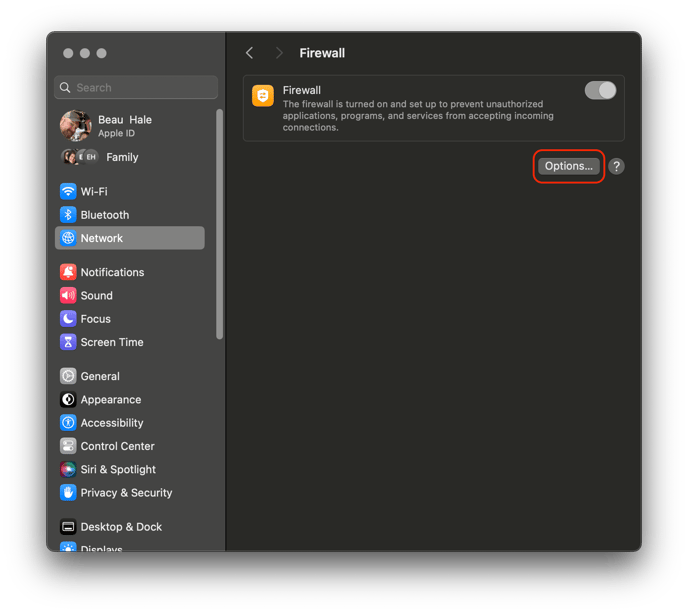Why can't I discover or connect to my Apple TV or Google Chromecast device?
AirParrot 3 uses the AirPlay and Google Cast protocols for discovery and connections to your supported AirPlay and Cast receivers. If you are having issues discovering or connecting to your receiver there are a few things you can check.
Check your firewall settings
macOS
To check the firewall settings on your Mac you can follow the path: System Preferences > Network > Firewall to open the firewall settings on the Mac. You can then select the Options button and ensure that AirParrot 3 is set to Allow


Windows OS
Note: If there are 3 check boxes available: Private, Public, and Domain then you will need to ensure all 3 boxes are checked to properly allow AirParrot 3 through the firewall.
Check your antivirus settings
Checking the allowances in antivirus software will be a similar process to the steps when checking the native firewall settings on a Mac or Windows PC. However, since each version of antivirus is different, we recommend contacting the support of the antivirus software provider for further assistance on allowing the software through the antivirus firewall or searching for online instructions on how to set the allowance from the antivirus software provider's help articles.
Reset your receiver and network hardware
One of the easiest fixes for discovery or connection issues may be the simplest depending on your network setup. It is very common to clear up these issues by simply giving your network router and modem a power cycle by unplugging them from the power for a few minutes to reset their network connections. Also, giving the receiver device and your computer a reboot while the network hardware is rebooting is highly recommended as that will also reset their network connections.
Use the QuickConnect function in the AirParrot 3 menu
Using the QuickConnect function in the AirParrot 3 menu will create a direct IP routable connection between the receiver and the sending Mac or Windows PC. To use the QuickConnect function, simply enter the IP address of the receiver into the QuickConnect box in the AirParrot 3 menu to create the direct IP routable connection.
If you are having an issue discovering your receiver in the AirParrot 3 menu, but you can connect with the QuickConnect function, then that could indicate a potential firewall issue and you will need to check those allowances.
Ensure the receiver and connecting computer are connected to the same network and VLAN
If you are having issues discovering or connecting to a receiver, you will want to ensure these devices are connecting to the same network. To easily check this, open the network settings on the receiver and computer to ensure the receiver and computer's first 3 sets of numbers in the IP address match (for example 192.168.0 or 10.0.0). If the first 3 sets of numbers in the IP address do not match, then that would indicate the devices are not connected to the same network.
If you are having issues while connected to a larger network such as a school or large office building, then you will want to ensure the devices are on the same VLAN or subnet within the network to connect. Apple's Airplay and Google's Cast protocols cannot cross subnets/VLANs, this is a limitation of these protocols that AirParrot 3 is bound to.
You can also refer to our Network Requirements guide for additional assistance when connecting on a larger corporate or school network.